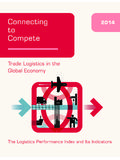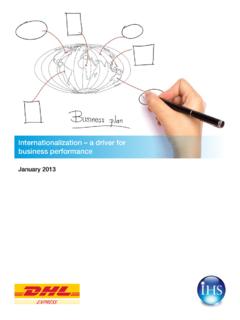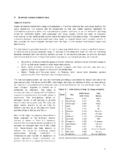Transcription of The Infant Henrique Bridge over the River Douro, …
1 F d ration Internationale du B ton Proceedings of the 2nd International Congress June 5-8, 2006 Naples, Italy ID 1-16 Session 1 Large projects and innovative structures The Infant Henrique Bridge over the River Douro, in Porto, Portugal Ad o da Fonseca, A. AFAssociados - Projectos de Engenharia, SA, Cais do Lugan, 224 4400-492 Porto and Department of Civil Engineering, Faculty of Engineering, University of Porto, Portugal Millanes Mato, F. IDEAM, SA, Calle Vel zquez, 41 - Esc Izqda. 1 A 28001 Madrid and Department of Mechanics and Structures, Escuela T cnica Superior de Ingenieros de Caminos, Canales y Puertos, Universidad Polit cnica de Madrid, Spain Bastos, R. AFAssociados - Projectos de Engenharia, SA, Cais do Lugan, 224 4400-492 Porto Matute Rubio, L. IDEAM, SA, Calle Vel zquez, 41 - Esc Izqda. 1 A 28001 Madrid INTRODUCTION The public call for tenders for the Design and Build contract of the Infant Henrique Bridge , connecting the cities of Porto and Gaia and located halfway between the Luiz I Bridge and the Maria Pia Bridge , demanded a solution that would have to match the technical and aesthetic qualities of those two bridges, which are both considered great works of structural engineering (Fig.)
2 1). The responsibility in designing such a Bridge was raised further by naming the Bridge after the Infant Dom Henrique , the Portuguese Prince who is one of the most distinguished figures of the city of Porto and Portugal and who led Europe on the maritime adventure to meet other civilisations. The project designers understood that these qualities would have to appear in a discrete manner, without fanfare and embellishment. A Bridge that, without supports on the riverbed, without supports even on the banks of the River , would fly as if it were a bird over the noble waters of the River Douro, with great transparency and expressing itself in the purest possible way. This Bridge does not contain any decoration. It does not contain anything that does not comply with the functional requirements. Everything in the Bridge has a purpose that is both structural and functional.
3 For this reason, it has the virtue of simplicity, structural purity, and geometric regularity. Keywords: Bridge , shallow arch, slender arch, concrete HISTORY OF THE PROJECT The city of Porto and its bridges Porto Granitic, baroque, romantic, mirrored in the River .. This is OPORTO . CALE means place, where a River PORT developed; the PORT of CALE, that is, PORTCALE, which gave the name to PORTUGAL. Fig. 1. Aerial view of Maria Pia, Infant Henrique and Luiz I Bridges. Proceedings of the 2nd Congress Session 1 June 5-8, 2006 Naples, Italy Large projects and innovative structures 2 world Heritage The city of Porto, built along the hillsides overlooking the mouth of the Douro River , is an outstanding urban landscape with a 1,000-year history. Its development on the north bank facing the sun left the hill slopes on the south bank free to accommodate the amphitheatre of Port Wine cellars. Wines that still carry the perfume of Gaia, the beautiful Moorish princess that lived in the castle facing Porto and that gave name to the left bank.
4 Bridges Crossing the River Douro from Porto to Gaia has been always a very special experience and an inspiration for the construction of outstanding bridges with the highest regard to the power of the River underneath. Bridge OF BOATS Provisional boat bridges were assembled for very special occasions since the 10th Century, but the first built to last the entire dry season, from April to October, was open to pedestrian and animals in 1806. SUSPENSION Bridge The first permanent Bridge was a suspension Bridge . Its span of 170 m was almost a world record at the time. Designed by engineer Stanislas Bigot, construction finished in 1843 but the Bridge was demolished after 44 years only. Bridge MARIA PIA This work of art is a fundamental mark in the history of railway Bridge design and construction. Built by engineer Gustave Eiffel, it is the most famous Bridge in Porto. The lightness of the Maria Pia Bridge is extraordinary, with a hinged arch spanning 160 m and setting a world record at the time.
5 The opening ceremony took place on the 4th of November of 1877. Bridge LUIZ I This double deck Bridge for trams and motorcars sits splendidly in the local topography. The design of engineer Th ophile Seyrig set a world record at the time with the two decks supported by the arch spanning 172 m. Construction started in 1881 and it was open to traffic on the 31st of October of 1886. ARRABIDA Bridge This Bridge is an impressive work of art. The double arch spans 272 m and for a while set a world record for reinforced concrete bridges. Designed by engineer Edgar Cardoso and built with innovative procedures, the opening ceremony on the 22nd of June of 1963 was an enthusiastic popular event. SAINT JOHN Bridge Engineer Edgar Cardoso was the designer of this majestic railway Bridge over the Douro, taking the trains off the old Maria Pia Bridge .
6 It was open to traffic on the 24th of June of 1991. This Bridge is still the world record in portal prestressed concrete railway bridges, with a central span 250 m long. Proceedings of the 2nd Congress Session 1 June 5-8, 2006 Naples, Italy Large projects and innovative structures 3 Infant Bridge A light metro network is under construction in the metropolitan area of Porto, and the central line connecting the commercial and administrative centres of Porto and Gaia was installed in the upper deck of the King Luiz Bridge . A new Bridge for the displaced road traffic had to be built 500 m to the East, half way in between the Maria Pia Bridge and the Luiz I Bridge . Therefore, the Infant Bridge takes the centre position between the two masterpieces of the 19th Century. Evidently, it is a Bridge inspired by the works of art designed by the Swiss engineers Robert Maillart and Christian Menn.
7 From the former, is mentioned the Bridge over the Schwandbach stream, built in 1933 and having a span of m. From the latter, are referenced the Hinterrhine Bridge , in the Viamala Gorge, and the two bridges with a span of 112 m, built in the second half of the twentieth century, over the Moesa stream on the south slope of the San Bernardino Pass. DESCRIPTION OF THE STRUCTURE Conception of the structure The demand was for a 21st Century Bridge between two bridges of the 19th Century. A Bridge with the following fundamental conceptual features: - High respect for the River underneath and to the magnificent historic bridges in Porto; it does not compete with them; it only tries to come up with a new solution that is discreet in the form and elegant, with the highest technical purity and advanced both in its design and in its construction; - High respect towards the city of Porto and to its particular profile drawn in the blue or misty sky, with no structural elements above the deck of the Bridge .
8 The Bridge is located in a well defined urban space that is full of character and personality; this Bridge intends to avoid any conflict with the consolidated outline of the city, adding no new elements that might change it. The solution for the Bridge is very simple and neutral towards the city, at the same time calling for an advanced technology in its construction. A Bridge that stays handsomely in its place, showing up very cautiously with no will to form either a new image or a new urban deco. This Bridge flies from Gaia to Porto as a bird, in a clean and sensible way and expressing itself in the purest manner, with no supports in the River Douro, not even in its banks. This structure flies musically, away from the conventional and from the ornamental. A singular and highly slender arch lands with a natural and harmonious movement in the high rocky slopes up in the hills, and this arch supports the deck of the Bridge with a profile that is more powerful in its drawing than that of the arch.
9 This Bridge has a peculiar geometric character. It is formed by grand planes, both the arch and columns, and by the powerful box-beam of constant high of the deck. The structure is made up of straight lines and planes, not of curved elements. That corresponds better to the anti-funicular of the loading and eases the construction process. This aspect slightly broken is more functional and gives a very special personality to the Bridge [1, 2, 3]. Design of the structure The Infant Dom Henrique Bridge is composed of two mutually interacting fundamental elements: a very rigid prestressed reinforced concrete box beam, m in height, supported on a very flexible reinforced concrete arch, m thick. The span between abutments of the arch is 280 m and the rise until the crown of the arch is 25 m, thus with a shallowness ratio greater than 11/1. In the 70 m central segment of the Bridge , the arch combines with the deck to form a box section that is 6 m in height.
10 The lateral faces of this section are recessed to give the impression of continuity of both the deck and the arch. The arch has a constant thickness and a width that increases linearly from 10 m at the central span segment up to 20 m at the abutments [4]. Proceedings of the 2nd Congress Session 1 June 5-8, 2006 Naples, Italy Large projects and innovative structures 4 Fig. 2. Elevation and cross-sections of the Bridge . Structural behaviour The structural behaviour of the flexible arch rigid deck combination has the following basic features: - Absence of important bending moments in the arch except at its fixed ends; - Axial force variations carried by the arch are relatively moderate; the tendency of the arch rise to decrease due to thermal actions and creep and shrinkage deformations is hindered by the rigidity of the deck; - The deck behaves as if it were a continuous beam on elastic supports provided by columns spaced 35 m apart (in fact, the contribution of the deck towards resisting the applied vertical loads is around 15% for permanent actions and symmetrical live loads; this percentage increases to 20% in the case of asymmetrical live loads, which means that the usual high bending moments in the arch under live loads with a pressure line not matching the arch shape are avoided).


